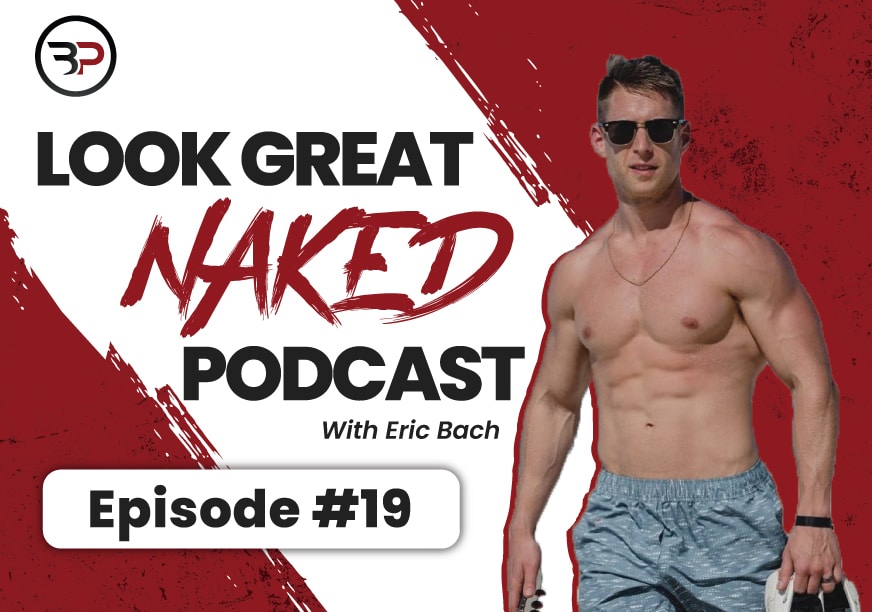Five Guaranteed Ways to Build More Muscle
October 17, 2016
We fall prey to the endless onslaught of fitness marketing and its big promises.
Add three inches to your arms in four weeks.
Go from keg to six-pack in eight weeks.
If it all sounds too good to be true, it is.
Slick marketing would have you believe that lookin’ better naked is instantly attainable with another scoop of protein pixie dust. Another problem is that some knowledgeable coaches withhold information. They seem to treat their experience is a classified secrets.
But building muscle isn’t a collection of voodoo secrets. And anyone who says so is full of poop emojis.
I’m here to cut through said poop, and help you grow like a pro. We’ll keep it simple by focusing on exactly what you need to cut through the hype and build more muscle, ya dig?
1.Can’t “Feel” your Muscles Working? Try Pre-Set Paused Reps
If you can’t feel a muscle doing the work, it’s not going to grow. Moreover, most lifters get stuck with “lagging” muscle groups because they lack the mind-muscle connection to optimally stimulate stubborn muscle fibers.
Well, here’s your solution. It’s not pleasant (unless you’re a glutton for punishment), but it’s damn effective.
Pre-Set Paused Reps
The key to improving your mind muscle connection, in any case, is focusing on your stubborn muscle group doing the work. Don’t throw up the weight aimlessly. Focus, be present and feel your way to success.
Second, you’ll perform a “paused rep” at the sticking point of an exercise for 15-30 seconds. Hold the position and “squeeze” the muscle. Then, without resting, perform 8-12 regular reps on the exercise.
This will fire the target muscle group, helping you feel said muscle group like never before on your upcoming reps and maximizing growth.
P.S. Looking to maximize lean muscle growth without living in the gym? Grab your copy of the NEW Minimalist Muscle Blitz.
Isometrics are still demanding on your CNS, so start light. I’d recommend about 75% of the weight you would normally do with a given exercise. Also, use a spotter with all barbell and dumbbell variations, or simply hop onto a machine.
Here are my favorites:
Arms
- Chin-up iso-hold (at 90 degrees)
- Seated dumbbell curl isohold at 90 degrees
- Dip or ring dip at full contraction
- Triceps rope pushdown, arms fully extended and rope flared away
Chest
- Push-Up Iso-hold
- Machine Bench Iso-hold
- Dumbbell isohold
- Cable crossover isohold
Legs
- Narrow Stance Goblet Iso-hold
- Bulgarian split squat iso-hold
- Supine hip thrust iso-hols
Lats
- Chin up iso-hold at the top
- Wide grip row isohold at chest
Shoulders
- Dumbbell press held at nose level
- Dumbbell lateral raise just below shoulder height
- Machine shoulder press at nose level
Finish out stubborn body parts once or twice per week with 2-3 sets of a 15-30 second-hold followed by 8-12 reps.
2.Train to Failure…Occasionally and Conservatively
Taking your exercises to technical failure is a fantastic way to build muscle. And that’s not just ‘bro science from cut-off wearing dudes at the gym. One recent study found that when taken to failure loads of 30% 1RM (very light, 20+ reps) were nearly as effective as using loads of 80%-1RM. This falls in line with common muscle building recommendations of 6-12 reps. In other words, using much lighter weights than typically prescribed, but taken to failure, can yield huge gains in muscular size.
But there’s a catch. Failure reps and sets aren’t for beginners.
The stronger the lifter the more tension they create and more muscle fibers they activate. So failure reps work best with intermediate to advanced lifters with a sound base of strength.
Tips:
- Keep your failure sets within reason.
- Use low-risk exercises such as isolation exercises (curls, lateral raises) and machines to minimize injury risk, while still fatiguing the maximum number of muscle fibers.
- Don’t go to failure on every set or every workout
Failure, whether it’s a max deadlift or a failure set of goblet squats, places high demands on your Central Nervous System (CNS). But if you do it just right, with low-risk exercises every few workouts, you’ll boost muscle growth.
3.Get Strong to Build More Muscle
Most guys jump directly into advanced bodybuilding style workouts before they’ve mastered basic movement patterns and built a foundation of strength. This keeps most guys in the beginner stage of training, whether they’d like to admit it or not.
You need strength.
Without strength, all the volume in the world won’t optimally build muscle. The overall stress on your body will be too low.
There are two big reasons having a strength foundation is important to building size:
First: getting strong teaches your nervous system to be more efficient. You’ll recruit more muscle fibers to work together to perform the movement, leading to more strength and muscle.
Second: strength builds your work capacity. Building muscle requires three factors: Metabolic stress, mechanical tension, and muscular damage.
Without the ability to build tension and lift moderately heavy weights for more volume, you can’t create the stress needed to build muscle.
To get strong, go with a basic 5×5 style program for six months. You don’t need to do squats, bench presses, and deadlifts like a competitive powerlifter. Focus on varieties of squats, hinges, presses, pulls, and weighted carries. Add weight to the bar over time. Stick with the basics before you get fancy.
4.Get the Pump to Build More Muscle
Yes, strength is important. But as outlined by Brad Schoenfeld’s work covering the mechanisms of hypertrophy, strength and tension is only a piece of the mass building formula. If you want to maximize muscle growth, you need to maximize metabolic stress and metabolic damage. In other words, get a damn pump before you leave the gym!
Metabolic Stress
Engorged muscles play an important role in hypertrophy. If you’ve ever experienced a sleeve-splitting pump after the end of an arms workout, you’ve experienced metabolic stress. When you work out hard to achieve a pump, you build up lactate, hydrogen ions, creatinine, and other metabolites. And you also prevent blood from escaping. This metabolic stress in the muscle signals your muscles to grow.

Muscular Damage
I can’t be the only dude to ever get struck on the toilet the day after crushing legs, right?I hope not. This could get embarrassing.
Anyway…This soreness might feel like the end of the world, but it’s also indicative of muscular damage. Luckily, soreness isn’t for naught. The t damage to muscle tissue creates a temporary inflammatory response and releases the necessary signals for muscle growth.
It’s important to note that more damage instigates a great need for repair and nutrient delivery to the source of damage. This reversal of damage promotes muscle fibers to recover and come back stronger in order to respond to future stimuli. Some soreness is okay. But excessive muscular damage may interfere with how often you train and thus slow down your gains.
So, what does this actually mean?
Start off each workout with heavy compound exercises for 3-5 sets of 3-6 reps. These will build a big strength foundation while stimulating mechanical tension in the muscle fibers and build real-world strength and dense muscle.
Afterward, the majority of training volume will be from 2-3 exercises with moderate loading at 6-12 reps per set and occasionally, high rep failure sets.
These aren’t some arbitrary numbers. This rep range provides the perfect 1-2-3 punch of mechanical tension, metabolic stress, and muscular damage you need to get yoked like Luke Cage. Keep rest periods to roughly one minute between sets.
Finally, end each workout with an exercise performed in the high-rep range — between 12-25 reps per set — to improve lactate threshold and increase the metabolic stress of the working muscles. Although loaded sub-maximally, these reps should leave your muscles burning and lungs screaming after only one or two sets.
5.Sprinkle In Some POWA!
Before you get your undies in a bundle, hear me out. More often than not, lifters stagnate from following the same routine for months and years on end. In the case of building muscle, if you’ve neglected explosive movement then adding it back in may be the trigger you need to improve muscle fiber recruitment and boost your athleticism.
To that note, my clients see their best results when we start each workout with an explosive exercise to fire up the CNS.
It all starts with the Size principle
In 1965, Harvard physiology professor Dr. Elwood Henneman released an awesome study on the important function of motor neurons.
At the risk of oversimplifying, Low-level input from your brain recruits small motor neurons and muscle fibers. High-level input recruits larger muscle fibers for more force. That’s a bit like what happens when you wind up and heave your phone like a Nolan Ryan fastball at the nearest wall when you’re losing 30-0 in fantasy football.

Think of a squat. When you un-rack a squat that is 85% 1-RM, your nervous system goes into overdrive. It sends massive signals to your body to increase muscular recruitment and lift the damn thing.
Motor neurons, and virtually every other nerve in your body, are constantly receiving information from other nerves, such as the descending neural tract from your brain. Your nervous becomes super-charged. It recruits more muscle fibers to execute a heavy squat. And the more muscle fibers activated, the greater your strength potential and the more fibers you can fatigue with hypertrophy-focused training.
That means lifting heavy all the time is best, right?
Nope. Sorry.
Your nervous system, joints, and tissues would be shitting a metaphorical brick before long. You’d be more likely to end up in rehab than turning heads on the beach.
Luckily, you can maximize muscle fiber recruitment by other methods when lifting:
- Lift heavier weights.
- Lift lighter weights (or move your body, faster.)
So, here’s what you do:
Add one or two explosive exercises directly after your warm-up.
These explosive exercises with lighter loads will help you increase neural drive to your muscles, recruit more/activate dormant muscle fibers, and maximize the efficiency of your central nervous system. By keeping the resistance lighter, you’ll improve neural recruitment without excessive stress on your CNS. You can still recover from your hypertrophy-based training and build more muscle.
I’d recommend doing an explosive lift twice per week for three sets of five reps. Rest about a minute between them, and focus on generating as much power on each exercise. Don’t race through–treat every rep like it’s your last.
To Boost Upper Body Power
MB Overload Slam
Clap Push-Up
To Boost Lower Body Power
Medicine Ball Back Toss
Box Jump
Single Response Jump
DB Jump Squat
Keep the weight light, 5-12 lbs. is good for most. More isn’t better here.
The Takeaway
It’s easy to get excited by a blog post. The temptation is to completely change your routine.
Don’t.
Instead, look at your training and ask yourself:
Which of these methods is missing?
Add one of these principles at a time for the next month and see how you’re progressing.
Still struggling?
Add another method, testing, and tweaking until you’re making consistent gains.
Implementing these muscle growth methods will give you the tools to build more muscle and look better naked. Implement them now and maximize muscle growth with the Minimalist Muscle Blitz.
Resources
Schoenfeld, Brad. “The Mechanisms of Hypertrophy and Their Application to Resistance Training.” Journal of Strength and Conditioning Research. 24.10 (2010): 2857. Web. 21 Nov. 2013.
Henneman, E, Somjen G, Carpenter DO. J Neurophysiol. 28:560-580, 1965.










Great stuff man!
Thanks brother!
Learned so much from this page, muscle building for the win!
Great to be learning these techniques even at 70 years old. It is possible to gain strength and muscle size and tone even when so many say it isn’t possible after 60.
Thank you, Ken!
[…] in cumulative fatigue and staleness. In addition, you run the risk of losing a portion of the muscle mass gained during the higher volume blocks […]